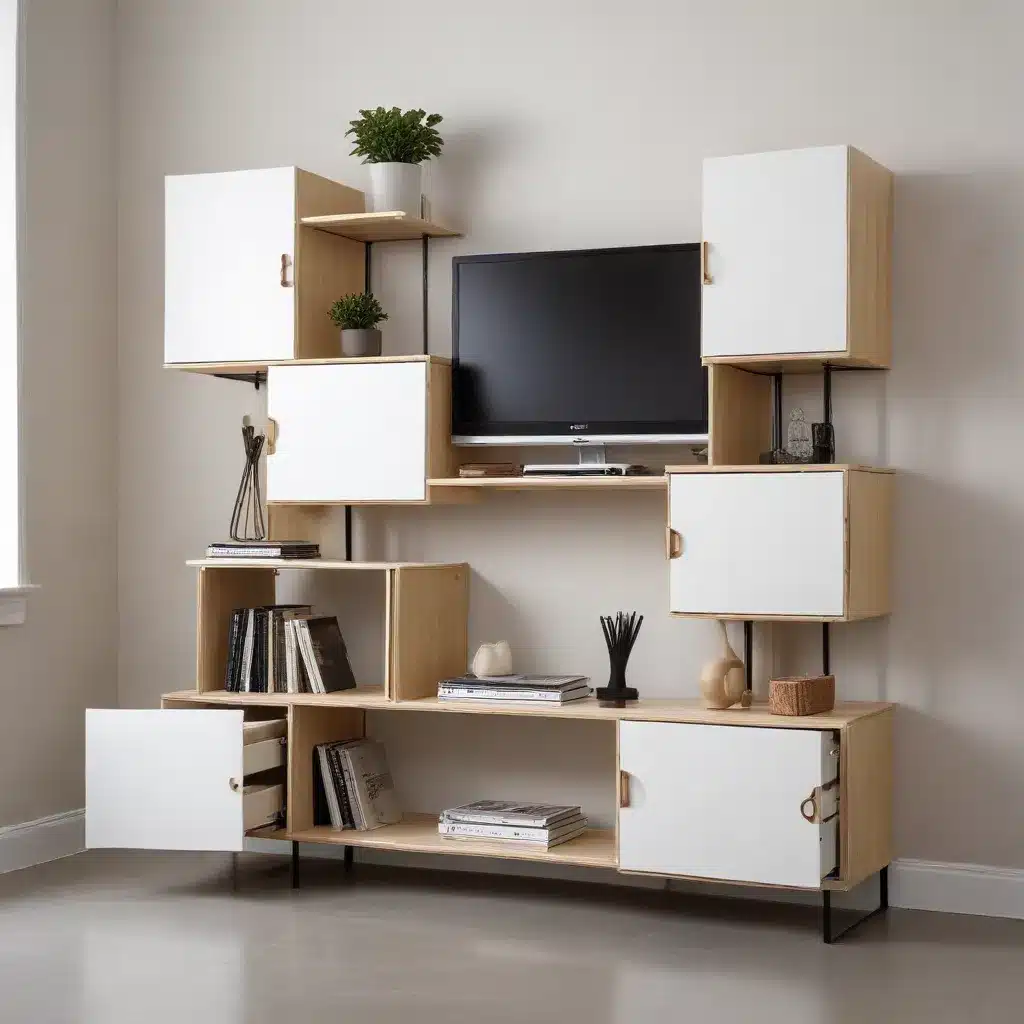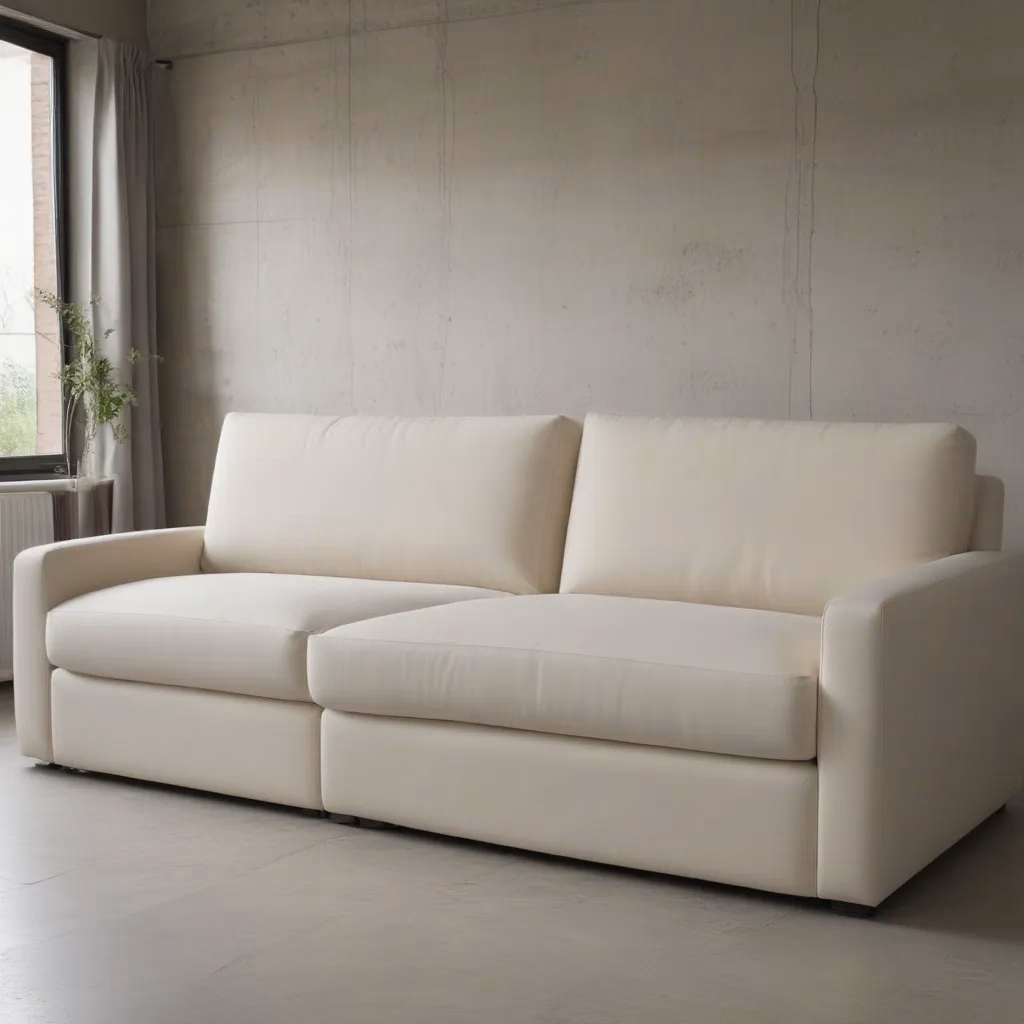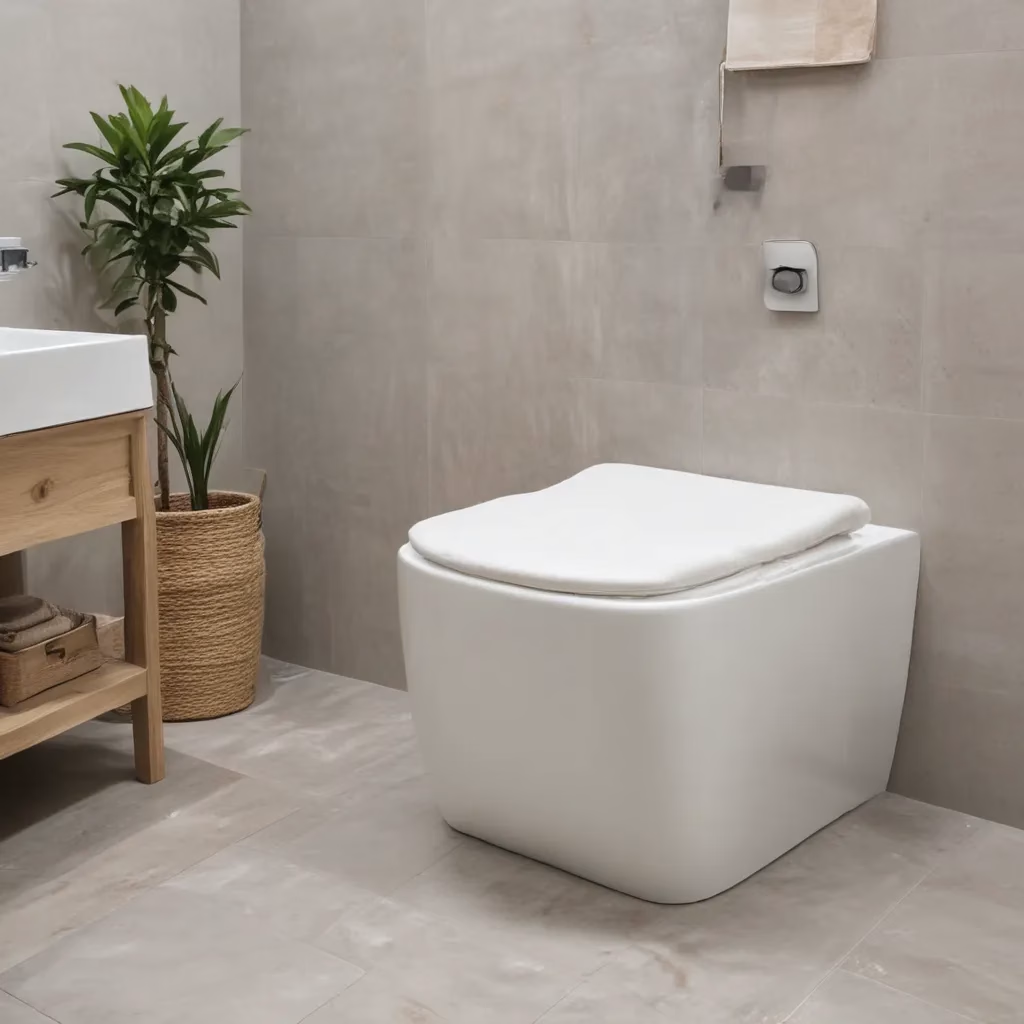
The Rise of Flexible Furniture Solutions
As a furniture specialist with years of experience in the industry, I’ve witnessed firsthand the remarkable shift in how people approach their living spaces. Gone are the days when a sofa was just a static piece of furniture, anchored in one spot for years on end. Today’s homeowners and designers are increasingly drawn to the concept of adaptable aesthetics, and at the forefront of this movement is the surge in popularity of modular furniture systems.
I remember when I first encountered a truly versatile modular sofa. It was at a trade show about a decade ago, and I was immediately struck by its potential to revolutionize interior design. The ability to reconfigure, expand, or contract a single piece of furniture to suit changing needs seemed almost magical. Since then, I’ve seen this concept take root and flourish in homes across the country.
The appeal of modular furniture lies in its inherent flexibility. In my consultations with clients, I often find myself recommending modular pieces, especially for those who live in urban environments where space is at a premium. These systems allow for a level of customization that was previously unheard of in the furniture world. Want a cozy loveseat for movie nights? How about an expansive sectional for hosting parties? With modular furniture, it’s all possible with the same set of pieces.
Understanding Modular Furniture Systems
When we talk about modular furniture systems, what exactly do we mean? At its core, modular furniture consists of individual components that can be arranged and rearranged in various configurations. This concept extends beyond just sofas – it encompasses everything from shelving units to bedroom sets.
In my experience, the most successful modular systems share a few key characteristics:
- Interchangeability: Each piece is designed to work seamlessly with others in the collection.
- Scalability: The system can be expanded or reduced to fit different spaces.
- Versatility: Components serve multiple functions or can be adapted for different uses.
I once worked with a young couple who were expecting their first child. They were living in a small apartment but wanted furniture that could grow with their family. We chose a modular sofa system that could start as a simple three-seater but had the potential to expand into a large sectional as their needs changed. This kind of forward-thinking design is what makes modular furniture so appealing.
It’s not just about practicality, though. The aesthetic appeal of modular furniture is undeniable. Clean lines, contemporary designs, and the ability to mix and match colors and textures allow for a truly personalized look. I’ve seen clients transform their living spaces with modular pieces that reflect their unique style and personality.
The Benefits of Adaptable Living Spaces
Adaptable living spaces, facilitated by modular furniture, offer a multitude of benefits that I’ve seen my clients enjoy time and time again. Let’s break down some of the key advantages:
Space Optimization
In urban areas where square footage comes at a premium, the ability to maximize space is crucial. Modular furniture allows for efficient use of available room, adapting to different layouts as needed. I recall a client with a studio apartment who used a modular sofa system that could be reconfigured into a guest bed when friends visited. This dual functionality eliminated the need for a separate guest room or bulky sleeper sofa.
Cost-Effectiveness
While the initial investment in quality modular furniture might be higher, the long-term savings can be substantial. Instead of purchasing new furniture every time your needs change, you can simply reconfigure or add to your existing modular set. I always advise my clients to think of modular furniture as an investment in their future living spaces.
Aesthetic Flexibility
One of the most exciting aspects of modular furniture for me is the creative freedom it offers. You’re not locked into a single look or configuration. Want to refresh your living room for the new season? Simply rearrange your modular pieces for a whole new feel. This flexibility is particularly appealing to those who enjoy frequently updating their interior design.
Choosing the Right Modular System for Your Home
Selecting the perfect modular furniture system requires careful consideration. Here are some factors I always discuss with my clients:
- Space Assessment: Measure your room carefully and consider different layout options.
- Lifestyle Needs: Think about how you use your space day-to-day and for special occasions.
- Future Plans: Consider potential changes in your living situation or family size.
- Style Preferences: Choose a system that aligns with your overall design aesthetic.
- Quality and Durability: Invest in well-constructed pieces that will stand the test of time.
I remember working with a family who loved to entertain but also valued their quiet time. We chose a modular sectional that could be arranged into a large conversation pit for parties, then easily separated into individual seating for more intimate gatherings or daily use. This versatility perfectly suited their dynamic lifestyle.
When it comes to style, the options are endless. From sleek, minimalist designs to more traditional aesthetics, there’s a modular system to suit every taste. I always encourage my clients to consider not just their current style preferences but also how these might evolve over time.
Maintenance and Care for Modular Furniture
Proper care and maintenance are essential for ensuring the longevity of your modular furniture. Here are some tips I always share with my clients:
- Regular Cleaning: Vacuum upholstered pieces weekly and spot clean spills immediately.
- Rotation: Regularly rotate cushions and rearrange modules to ensure even wear.
- Protection: Use fabric protectors on upholstered pieces to guard against stains.
- Professional Cleaning: Schedule professional deep cleaning at least once a year.
- Hardware Check: Periodically check and tighten any hardware that connects modules.
I once had a client who was hesitant about investing in a light-colored modular sofa due to concerns about stains. We opted for a high-quality fabric with excellent stain-resistant properties and implemented a strict care routine. Years later, that sofa still looks as good as new, proving that with proper care, modular furniture can stand the test of time.
The Future of Modular Design
As we look to the future, I’m excited about the innovations on the horizon for modular furniture design. From smart technology integration to eco-friendly materials, the possibilities are endless. I’ve been particularly impressed by recent developments in modular systems that incorporate charging stations and adjustable lighting, seamlessly blending technology with comfort.
Sustainability is another key trend I’m seeing in modular furniture design. Many manufacturers are now using recyclable materials and focusing on creating pieces that can be easily repaired or updated, rather than replaced entirely. This approach not only benefits the environment but also aligns with the growing consumer demand for sustainable home goods.
Incorporating Modular Furniture into Your Home
When it comes to integrating modular furniture into your existing decor, I always advise my clients to start with a plan. Consider the following steps:
- Identify Key Areas: Determine which spaces in your home would benefit most from modular solutions.
- Create a Cohesive Look: Choose modular pieces that complement your existing furniture and decor.
- Experiment with Layouts: Don’t be afraid to try different configurations to find what works best for you.
- Accessorize Thoughtfully: Use throw pillows, rugs, and other accessories to tie your modular pieces into the overall room design.
I recently worked with a client who wanted to create a multifunctional living space in their open-plan home. We used modular sofas and ottomans to define separate areas for relaxing, working, and dining, all while maintaining a cohesive look. The result was a space that could easily transition from day to night, work to play, with just a few simple adjustments.
The Role of Color and Texture in Modular Design
One of the most exciting aspects of modular furniture is the opportunity to play with color and texture. I always encourage my clients to think beyond neutral tones and consider how different hues and materials can create visual interest and depth in their space.
For example, I once worked on a project where we combined modules in various shades of blue, from pale sky to deep navy, creating a stunning ombré effect in the living room. The result was a unique, eye-catching focal point that could be easily changed by rearranging the modules.
Texture is equally important in modular design. Mixing materials like leather, velvet, and woven fabrics can add dimension and tactile appeal to your space. I often suggest combining different textures within the same color family for a sophisticated, layered look.
Modular Furniture for Different Room Types
While we often think of modular furniture in terms of living room sofas, its applications extend to every room in the house. Here’s how I’ve successfully incorporated modular designs in various spaces:
Bedroom
Modular bedroom furniture can be a game-changer, especially in smaller spaces. I’ve used modular headboards with built-in nightstands and storage to maximize space efficiency. Modular wardrobes are another excellent option, allowing for customization based on individual storage needs.
Home Office
With the rise of remote work, flexible home office solutions are more important than ever. Modular desks and shelving units can adapt to changing work requirements, from a compact workspace to an expansive home office setup.
Dining Room
Expandable modular dining tables are perfect for homes that frequently host gatherings. I’ve helped clients select systems that can transform from an intimate four-person table to a grand dining surface for twelve or more.
Outdoor Spaces
Don’t forget about your patio or garden! Modular outdoor furniture offers the same flexibility as indoor pieces, with the added benefit of weather resistance. I’ve created stunning outdoor living areas using modular sectionals and convertible dining sets.
The Impact of Modular Furniture on Interior Design
As a furniture specialist, I’ve observed how modular furniture has influenced broader interior design trends. The emphasis on flexibility and multifunctionality has led to a more fluid approach to space planning. Rooms are no longer defined by rigid functions but can adapt to various needs throughout the day.
This shift has also affected how we think about scale in interior design. Modular pieces allow for a more nuanced approach to filling space, avoiding the common pitfalls of furniture that’s too large or too small for a room. I’ve found that this adaptability leads to more harmonious and well-balanced interiors.
Moreover, the customizable nature of modular furniture has encouraged a more personalized approach to design. Clients feel empowered to create spaces that truly reflect their personalities and lifestyles, rather than adhering to prescribed design rules.
Overcoming Common Concerns About Modular Furniture
Despite its many benefits, some clients initially express reservations about modular furniture. Here are some common concerns I’ve encountered and how I address them:
-
Durability: Many worry that the connecting mechanisms might wear out over time. I assure them that quality modular systems are designed with longevity in mind and often come with warranties.
-
Comfort: Some fear that modular sofas might not be as comfortable as traditional ones. I encourage clients to test different configurations and often find that the adjustability actually enhances comfort.
-
Style Limitations: There’s a misconception that modular furniture is only available in modern styles. In reality, there are options to suit every aesthetic, from classic to contemporary.
-
Complexity: The idea of assembling and rearranging furniture can seem daunting. I provide clear instructions and often demonstrate how simple the process can be.
By addressing these concerns head-on and showcasing the versatility of modular systems, I’ve helped many skeptics become enthusiastic converts to the world of adaptable furniture.
Conclusion: Embracing Flexibility in Home Design
As we’ve explored the world of modular furniture systems, it’s clear that adaptability is key in modern interior design. From maximizing space in compact urban dwellings to creating versatile family homes, modular furniture offers solutions that can grow and change with our needs.
Throughout my career, I’ve seen how these flexible systems can transform not just spaces, but lifestyles. They empower homeowners to take control of their environments, adapting their homes to suit their evolving needs and tastes.
As you consider your own furniture choices, I encourage you to explore the possibilities of modular systems. Whether you’re furnishing your first apartment or redesigning your family home, the adaptability and style of modular furniture can help you create a space that’s truly your own.
For more inspiration and expert advice on creating your perfect living space, visit Sofa Spectacular. There, you’ll find a wealth of resources to help you make informed decisions about your home furnishings.
Remember, your home should be a reflection of you – adaptable, dynamic, and full of potential. With modular furniture, the power to create your ideal living space is in your hands.



